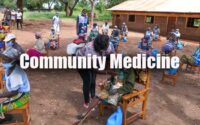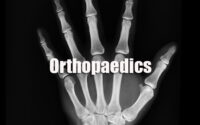Shalakya Tantra Questions and Answers
Shalakya Tantra Questions and Answers are available for Ayurveda students and teachers. Applicants can download Shalakya Tantra Old Question Papers pdf. Also, get the Study material, Preparation tips in addition to the Shalakya Tantra.

On our page, we provide Shalakya Tantra Previous Papers for the sake of aspirants. Therefore, download the Shalakya Tantra Previous Papers and start your preparation. Also, check the Shalakya Tantra Syllabus and Exam Pattern from the below sections.
Questions and Answers on Shalakya Tantra
1. According to Acharya Sushruta, how much is the thickness of Akshigata Patala in relation to Drishti?
(1) One fifth part
(2) One seventh part
(3) One ninth part
(4) One third part
2. The Vayu responsible for Nimeshonmesh Kriya (Blinking) as per Ashtanga Hridaya is –
(1) Prana
(2) Udana
(3) Samana
(4) Vyana
3. The Nidana uniquely mentioned in Yoga Ratnakar in the causative factors for eye diseases is –
(1) Ati Sheeghra yanat
(2) Shiro abhitapa
(3) Ritu Viparyaya
(4) Ati Madyapana
4. Which one of the following pairs is not correctly matched as per Sushruta Samhita?
(1) Arma – Chedana
(2) Shuktika — Ashastrakrita Aushadha Sadhya
(3) Krimigranthi — Lekhana
(4) Anjananamika — Bhedana
5. Which among the following is not the layer of Iris?
(1) Anterior limiting layer
(2) Anterior epithelial layer
(3) Basal lamina
(4) Posterior pigmented epithelial layer
6. According to Ashtanga Hridaya, Shodhana Gandusha is prepared from drugs with which Rasa?
(1) Madhura Amla Lavana
(2) Tikta Katu Amla Lavana
(3) Kashaya Madhura
(4) Kashaya Tikta
7. As per Sushruta, types of Kavala are –
(1) Three
(2) Four
(3) Five
(4) Two
8. Avagunthana was first described by which Acharya?
(1) Sushruta
(2) Sharangadhara
(3) Chakradatta
(4) Vagbhatta
9. According to Sushruta, the drugs of which Properties are used for treating excess Prasadana Anjana application?
(1) Ruksha Teekshna
(2) Ruksha Mridu
(3) Snigdha Teekshna
(4) Snigdha Mridu
10. According to Ashtanga _— Hrridaya, ‘Ksharabudbudakopam’ is the clinical feature of which of the following disease?
(1) Krimigranthi
(2) Upanaha
(3) Srava
(4) Puyalasa
11. Which of the following disease has clinical feature of ‘Jalabh’ Strava (discharges of watery Consistency) as per Sushruta?
(1) Puyasrava
(2) Pittasrava
(3) Raktasrava
(4) Shleshmasrava
12. In which of the junctional areas (Sandhi) does the Parvani disease develop as per Sushruta?
(1) Pakshma Vartmagata Sandhi
(2) Vartma Shuklagata Sandhi
(3) Shukla krishnagata Sandhi
(4) Apanga Sandhi
13. ‘Jantugranthi’ has been described in which of the following treatise?
(1) Bhavaprakasha
(2) Sharangadhara Samhita
(3) Madhava Nidana
(4) Yoga Ratnakara
14. As per Sushruta, the false statement regarding Netra Srava disease is –
(1) Four types of Netra Srava have been detailed in Sushruta Samhita.
(2) Netra Srava are painless.
(3) Netra Srava develops in Apanga Sandhi.
(4) Netra Srava are incurable.
15. The disease which is not counted in Eighteen Pilla is-
(1) Puyalasa
(2) Vataja Abhishyanda
(3) Shushkakshipaka
(4) Bisavartma
16. As per Ashtanga Hridaya, Panshu Purnabha Netrata is the clinical feature of which disease?
(1) Shushkakshipaka
(2) Sikata Vartma
(3) Krichronmilana
(4) Vataja Abhishyanda
17. Bheshaja Sadhya Vartmagata roga as per Acharya Vagbhatta is –
(1) Bahalavartma
(2) Krichronmilana
(3) Vartmakardama
(4) Pakshmashata
18. Pushpa Kasisa Anjan is specially mentioned by Acharya Vagbhatta in which disease?
(1) Laghana
(2) Pakshmashat
(3) Savrana Sukra
(4) Ajakajata
19. The Dosha involved in Utsangini as per Acharya Vagbhatta is –
(1) Rakta
(2) Sannipataja
(3) Kaphaja
(4) Pittaja
20. As per Ashtanga Hridaya, the Arma with rapid growth is –
(1) Prastari arma
(2) Kshataja arma
(3) Shuklarma
(4) Adhimamsajarma
| Kayachikitsa | Shalakya Tantra |
| Dravyaguna Vigyan | Panchakarma |
| Rachana Sharir | Shalya Tantra |
| Prasuti Tantra | Rog Nidan |
| Kriya Sharir | Agad Tantra |
21. The procedure not to be performed in treating Shuktika, as per Sushruta is –
(1) Nasya
(2) Lepa
(3) Seka
(4) Siramoksha
22. The treatment for Arma — Shesha as per Sushruta is –
(1) Lekhyanjana
(2) Kshara karma
(3) Lekhana with Mandalagra
(4) Lekhana with Shalmali patra
23. Malaktadarsha Tulya is the feature of which discase, as per Ashtanga Hridaya?
(1) Shukra Roga
(2) Parvani
(3) Shuktika
(4) Kshata Shukra
24. As per Ashtanga Hridaya, hot and cold discharges without apparent reason are observed in –
(1) Siraharsha
(2) Siraja Shukra
(3) Sirapidka
(4) Ajakajata
25. As per Ashtanga Hridaya, in which of the following disease, irrigation is done with Rodhra Potali”
(1) Shuddha Shukra
(2) Savrana Shukla
(3) Akshipakatyaya
(4) Ajaka
26. According to Ashtanga Hndaya, Nishpava ardha dala akriti is found in which disease?
(1) Raktaja Abhishyanda
(2) Akshipakatyaya
(3) Pittaja Abhishyanda
(4) Both (1) and (3)
27. As per Ashtanga Hridaya, Danta Varti is mentioned in the treatment of which discase?
(1) Kshata Shukra
(2) Danta Puputta
(3) Danta Vaidarbha
(4) Danta Nadi
28. Pakva Jambu Nibha is the feature of which disease as per Ashtanga Hridaya?
(1) Kukunaka
(2) Shyava Vartma
(3) Sira Shukra
(4) Kshata Shukra
29. As per Sushruta, following procedure is contraindicated in “Raga prapta Timira” –
(1) Sira moksha
(2) Jalaukavacharana
(3) Virechana
(4) Purana Sarpipana
30. Which Netra Roga is caused due to Shoka, Jwara and Ayasa, as per Bhavaprakash?
(1) Abhishyanda
(2) Dhumadarshi
(3) Nimisha
(4) Ushna Vidagdha Drishti
31. Which disease is mentioned only by Vagbhatta?
(1) Ushna Vidagdha Drishti
(2) Pitta Vidagdha Drishti
(3) Kapha Vidagdha Drishti
(4) Dhumadarshi
32. Which one of the following pairs is not correctly matched?
Refractive Indices of the media of the eye are –
(1) Aqueous humour — 1.33
(2) Lens — 1.42
(3) Vitreous humour — 1.33
(4) Cornea – 1.39
33. The prognosis of Nakulandhya, as per Acharya Vagbhatta is –
(1) Sukha Sadhya
(2) Asadhya
(3) Krichra Sadhya
(4) Yapya
34. ‘Nasanaha’ is a clinical feature of which of these Abhishyanda, as per Ashtanga Sangraha?
(1) Vataja Abhishyanda
(2) Pittaja Abhishyanda
(3) Kaphaja Abhishyanda
(4) Raktaja Abhishyanda
35. Jwara & Shiro—abhitapa are causative factors in the following disease, as per Sushruta Samhita –
(1) Paituka Adhimantha
(2) Dhumadarshi
(3) Ushna Vidagdha Drishti
(4) Hatadhimantha
36. Goshakrut Navana Nasya is used in which roga by Sushruta?
(1) Timira
(2) Kaphaja Adhimantha
(3) Kaphaja Abhishyanda
(4) Both (2) and (4)
37. Range of accommodation is the distance between which two of the following?
(1) Far point and near point of the eye
(2) The eye and the near point
(3) The eye and the far point
(4) The retina and the near point
38. Which of the following Patra Shaka is‘ unwholesome (Apathya) for the eyes, as per Yogratnakar?
(1) Jeevanti
(2) Vastu
(3) Sarshapa
(4) Punarnava
39. The image in Indirect ophthalmoscopy is —
(1) Erect, Virtual, Magnified
(2) Erect, Real, Magnified
(3) Inverted, Real, Magnified
(4) Inverted, Virtual, Normal
40. ‘In the Eye Bank, cornea is preserved at what temperature?
(1) 4°C
(2) -4°C
(3) 0°C
(4) 8°C
41. Earliest clinical feature of xerophthalmia in children is –
(1) Night blindness
(2) Conjunctival Xerosis
(3) Corneal xerosis
(4) Bitot’s spots
42. What is SAFE strategy adopted by WHO in Trachoma?
(1) Surgery, Antibody, Facelift, Ecosystem
(2) Sight, Antiglare, Face mask, Eye care
(3) Surgery. Antibiotic, Facial hygiene, Environmental changes
(4) Site, Antiviral, Facial lift, Ecosystem
43. In which disease, Badisha Yantra and Vriddhipatra are used as per Ashtanga Hridaya?
(1) Shuktika
(2) Parvani
(3) Pishtak
(4) Balasa grathita
44. Berlin’s oedema Is seen in –
(1) CRAO
(2) CRVO
(3) Blunt trauma
(4) Gaucher’s disease
45. The National Programme for Control of Visual Impairment and Blindness was launched in which year?
(1) 1963
(2) 1967
(3) 1976
(4) 1978
46. Pituitary tumors cause –
(1) Binasal hemianopia
(2) Homonymous hemianopia
(3) Mono ocular blindness
(4) Bitemporal hemianopia
47. Most common type of congenital cataract is-
(1) Capsular
(2) Zonular
(3) Coralliform
(4) Blue dot
48. Ocular trauma should be treated as per which Abhishyanda after a week, as per Sushruta Samhita?
(1) Vata abhishyanda
(2) Pitta abhishyanda
(3) Rakta abhishyanda
(4) Shleshma abhishyanda
49. Earliest detectable Iesions in diabetic Retinopathy its –
(1) Hard exudate
(2) Soft exudate
(3) Dot Hemorrhages
(4) Micro aneurysms
50. Roth’s spots in the fundus are seen in –
(1) Diabetes mellitus
(2) Chonoretinitis
(3) Bacterial Endocarditis
(4) Retinoblastoma
51. As per Sushruta, which of the following is not a feature of Samyaka Iekhya vartma?
(1) Rakta srava rahita (Devoid of bleeding)
(2) Kandu rahita (Devoid of itching)
(3) Nakha nibha (Appearance hike of a nail)
(4) Shyava vartma (Greyish colour)
52. Anguli Shastra Ieckhan has been mentioned by which Acharya and in which disease?
(1) Sharangadhara, Sheetada
(2) Sushruta, Dantapuputta
(3) Vagbhatta, Upajivha
(4) Vagbhatta, Adhiivha
53. Vatika Dhum is indicated in which discase, as per Sushruta?
(1) Krimija Shirashoola
(2) Krimi Karna
(3) Karma Srava
(4) Kama Shoola
54. As per Sushruta, Dhuma which can be taken both by oral and nasal routes is –
(1) Prayogika
(2) Snathika
(3) Vairechanika
(4) Vaamaka
55. For the treatment of which of the following Shiroroga, Shonita Nasya is given as per Sushruta?
(1) Sannipataja Shiroroga
(2) Knmya Shiroroga
(3) Kshayaja Shiroroga
(4) Raktaja Shiroroga
56. Which of the following Shiroroga has clinical feature of Hanugraha, as per Sushruta Samhita?
(1) Suryavarta
(2) Anantavata
(3) Ardhava Bhedaka
(4) Shankhaka
57. As per Ashtanga Hridaya, Karna nada is a clinical feature of –
(1) Vataja Shira shola
(2) Kshayaja Shira shola
(3) Raktaja Shira shola
(4) Knmia Shira shoola
58. Ganda Parshva Kampa is a feature of which disease, as per Sushruta?
(1) Vataja Shira shola
(2) Hanugraha
(3) Ananta vata
(4) Ardhava Bhedaka
59. Which disease aggravates due to these treatments like Swedana, Chardana, Shira moksha, Dhuma etc., as per Sushruta Samhita?
(1) Kshayaja Shira shola
(2) Raktaja Pratishyaya
(3) Krimija Shirashoola
(4) Anantavata
60. Which of the following is Apathya in Kama Roga as per yogratnakar?
(1) Nasya
(2) Vamana
(3) Swedana
(4) Dantakashtha



